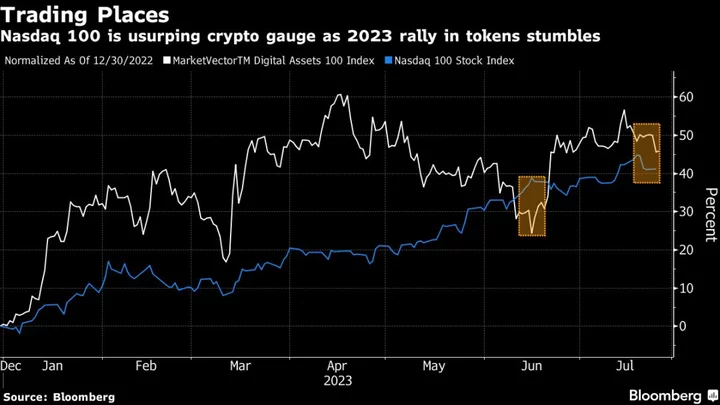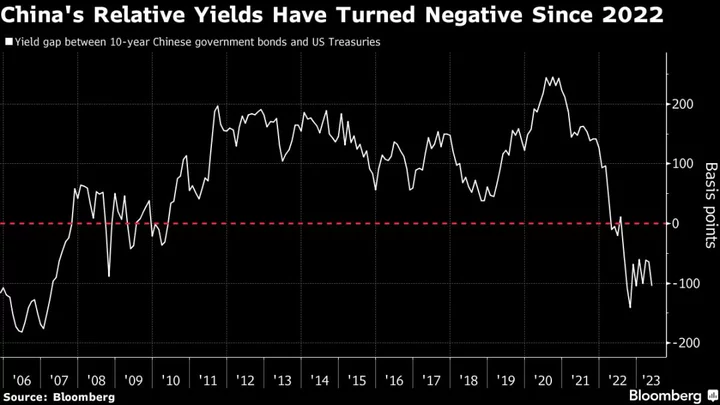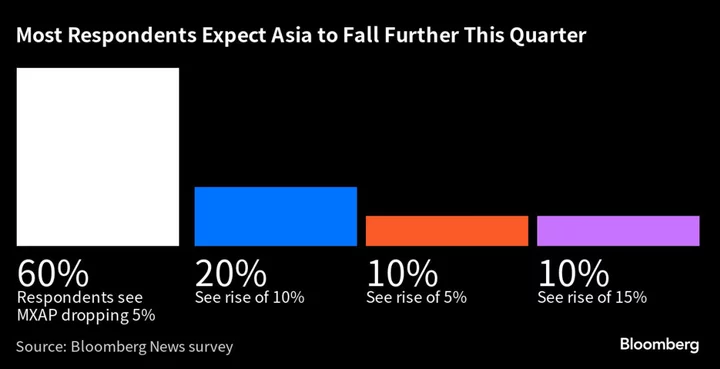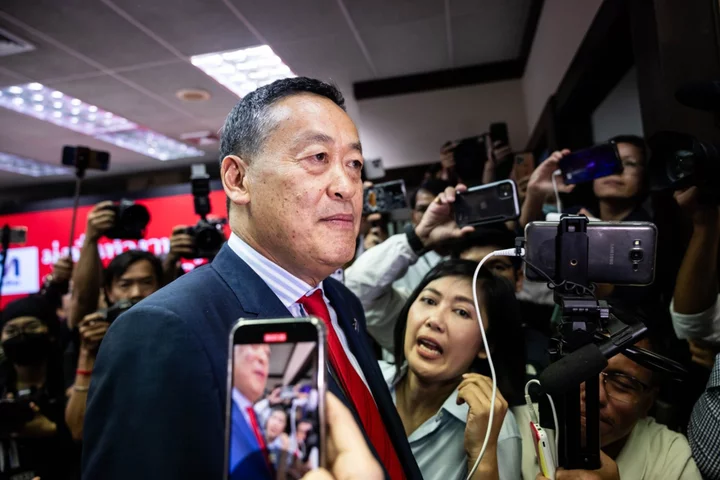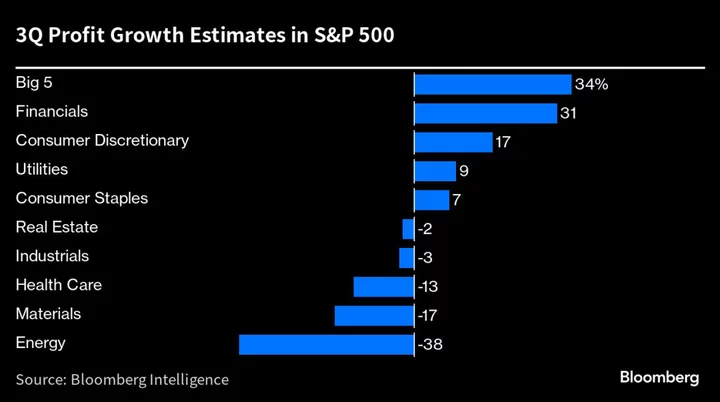The crypto market’s once-handsome 2023 lead over stocks is cracking as Bitcoin holds a retreat below $30,000.
The year-to-date climb in a gauge of the top 100 digital tokens has cooled to 46%, not far above a 42% jump in the Nasdaq 100 Index of tech stocks. Hype over artificial-intelligence products has boosted the equity measure, which briefly topped the MVIS CryptoCompare Digital Assets 100 Index in June.
Digital assets earlier got a boost from a court setback for a US regulatory crackdown and optimism that the nation may allow spot Bitcoin exchange-traded funds. Those drivers have ebbed and investors are now assessing how an expected Federal Reserve interest-rate hike this week may affect markets.
“The rally has lost momentum following the initial excitement sparked by the ETF news, and there are no other visible catalysts on the horizon,” said Caroline Mauron, co-founder of digital-asset derivatives liquidity provider OrBit Markets. But downside risk “should be limited as the Fed is near the end of the current rate hiking cycle, which should support risk assets including crypto.”
Some chart patterns signal caution. Bitcoin’s 20-week Bollinger bandwidth has shrunk to the narrowest in seven years. That suggests moves in the largest digital asset could become more intense, potentially on the way down if key thresholds give way. The Bollinger study is a way of analyzing volatility.
Bitcoin’s drop “should extend toward $26,000/$25,000 before finding support,” Tony Sycamore, a market analyst at IG Australia Pty, wrote in a note.
The token was little changed at around $29,282 as of 2:08 p.m. in New York on Tuesday. Smaller coins such as XRP and Dogecoin were mixed.
A rally in Worldcoin, the token of the crypto project co-founded by OpenAI Chief Executive Officer Sam Altman, moderated after its launch on Monday.
Worldcoin jumped to as high as $3.58 from the initial price of $1.70 but has fallen back to about $2, CoinMarketCap data showed. Roughly $625 million worth of the digital asset changed hands over the past 24 hours.
--With assistance from Sidhartha Shukla.

